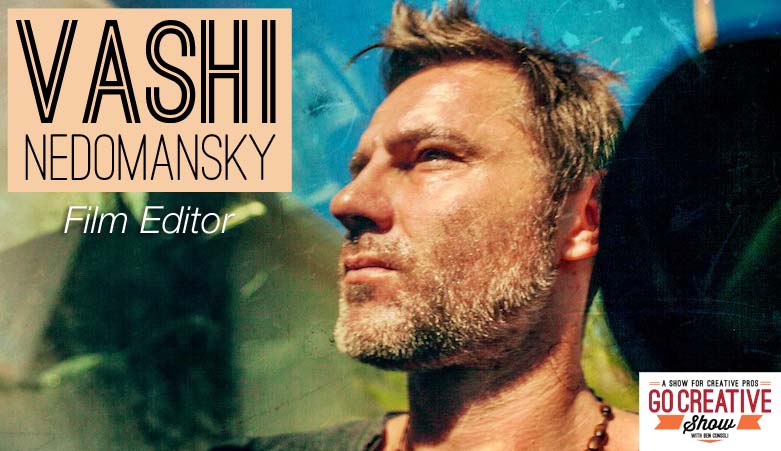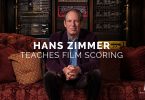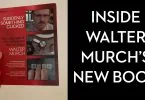Learn about the craft of film editing
As an editor, learning more about the craft of film editing is one of my favourite things to do. Thanks to the great people who make up the online global post-production community there is plenty of talented professionals to learn from.
Captain Philips Post Production
Captain Philips was the last film I’ve seen at the cinema and it was a 2 hour heart pounding piece of cinema. Masterfully directed by Paul Greengrass and edited by Christopher Rouse, the pair now have a long standing collaboration with Rouse having cut both the Bourne Supremacy and Ultimatum, as well as Green Zone and United 93.
There is a great Reddit As Me Anything with Paul Greengrass here.
Q: What was the most interesting thing that occurred on set when you were filming Captain Phillips?
PG: Well the focus puller throwing up on Tom Hanks’ leg on the first day we shot inside the lifeboat. It was very realistic!!! Needless to say, Tom didn’t bat an eyelid but was ready to shoot on. That’s commitment for you.
Editing: The Hollywood Reporter has a short interview with Rouse here, mostly on working with Greengrass and crafting the two captains performances.
“Paul brings me aboard months before shooting; I’m able to root myself in the piece long before I ever make a cut,” Rouse said. “Once I start editing, my process is similar to Paul’s: I make choices carefully — trying to be attentive to story, character and theme — but I also work very openly and intuitively, trying to get the most out of the material no matter where that takes me.”
Grading: Blackmagic Design posted a short press statement about the fact that Captain Philips was graded on Resolve by London based, Company 3 colorist Rob Pizzey. You can read a couple of interviews with Rob (about other films) online here and here.
“The camera is always moving because you’re at sea, so the tracking tool was perfect because I could hand draw shapes and then grade within that area. Resolve’s auto tracking would then map to the movement of the camera so we could get on with matching all of the footage. It was also really useful for lining up faces and pulling out eyes. With the auto tracking, you get the shape on there and it maps it all the way through. It really did save me a lot of time.”
Composing The Score: Fast Co Create have a fantastic interview, peppered with clips from the film and snippets from the soundtrack, with composer Henry Jackman. The interview goes on to cover a wide range of Jackman’s work.
[soundcloud url=”https://api.soundcloud.com/tracks/115974730″ width=”100%” height=”166″ iframe=”true”/]“It would be false to think that, because a score like Captain Phillips isn’t in that category of sweeping symphonic and thematic scores, that somehow that makes it more restricting, or that the director’s aesthetic has caused any restriction–I look at it as defining creative parameters, and once you know where those lines are, it’s just a different kind of creativity.”
Anatomy of a Scene – Editing Breakdowns
This is a brilliant short video essay from Max Tohline, in which he deconstructs this climatic scene from Sergio Leone’s The Good, The Bad and The Ugly. An insightful and fascinating watch.
Evan Richard’s has put together this great analysis of 5 editing techniques, theorised by Russian filmmaker Vsevolod Pudovkin. The five techniques Evan highlights are: Contrast, Parallelism, Symbolism, Simultaneity and Leit Motif. Well worth a watch.
Interviews with Film Editors

“You have to try, and make mistakes and that’s how you find out what kind of filmmaker you are.”
In this brilliant short clip, documentary editor Sam Pollard shares some of the inherent challenges of editing documentaries with students at the School For Visual Arts in New York, and how to draw the very best out of your material.

Director Judy Chaikin talks in the clip above about how to forge a great working relationship with your editor, in her case documentary editor Edward Osei-Gyimah. Great lessons to be learned for any film editor.
In this post screening Q+A Oscar winning film editor Steven Mirrione discusses his career, working with director’s Steven Soderbergh and George Clooney and a whole lot more. A great editor with plenty of great insights on shaping a feature film. Have a listen over on KCET.org.
Lastly check out this interview from The Post Lab with editor Darrin Navarro on his work on The Spectacular Now which won the Sundance Dramatic award Special Jury Prize for Acting. Darrin shares a lot of great wisdom on indie feature film editing.
James and I spent relatively little time concerning ourselves with internal cutting, compared to rethinking character arcs, establishing their stakes, and trying to illustrate their inner lives through the recombination and re-sequencing of scenes. This is actually a much more difficult editing assignment, because you have to make hard choices. Sometimes really good scenes get cut, but character is always paramount, followed by story.





